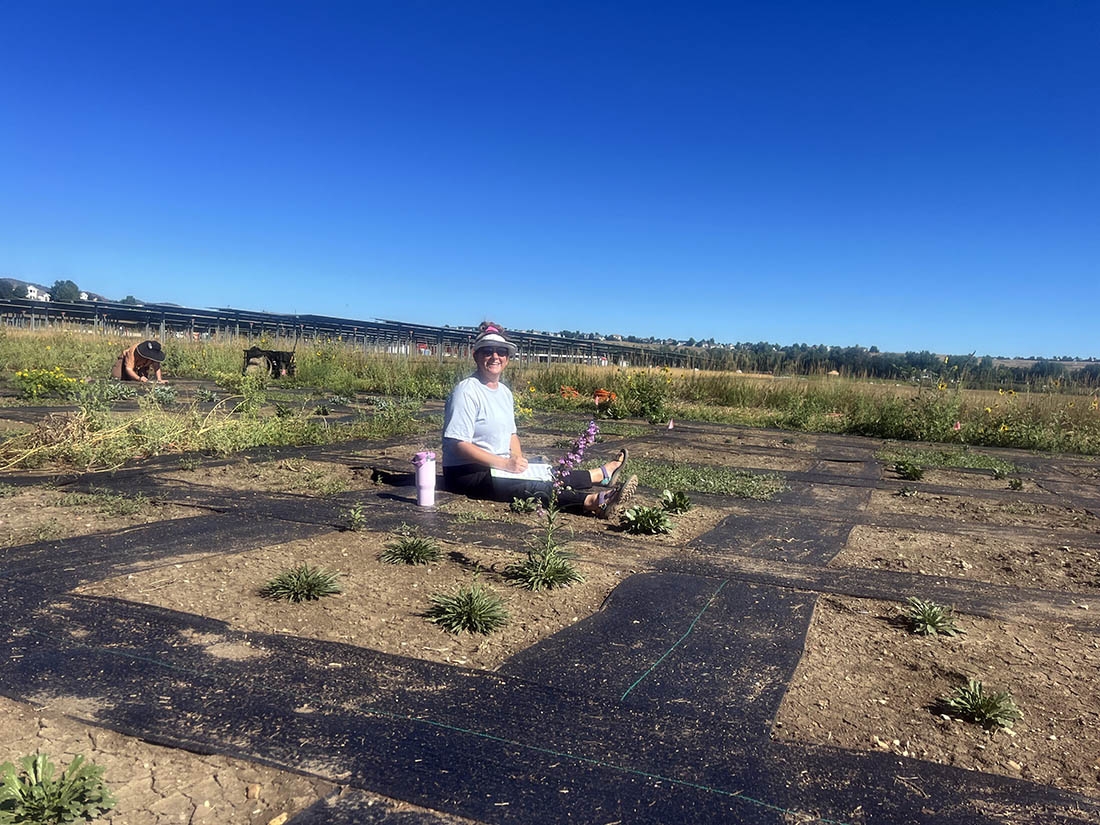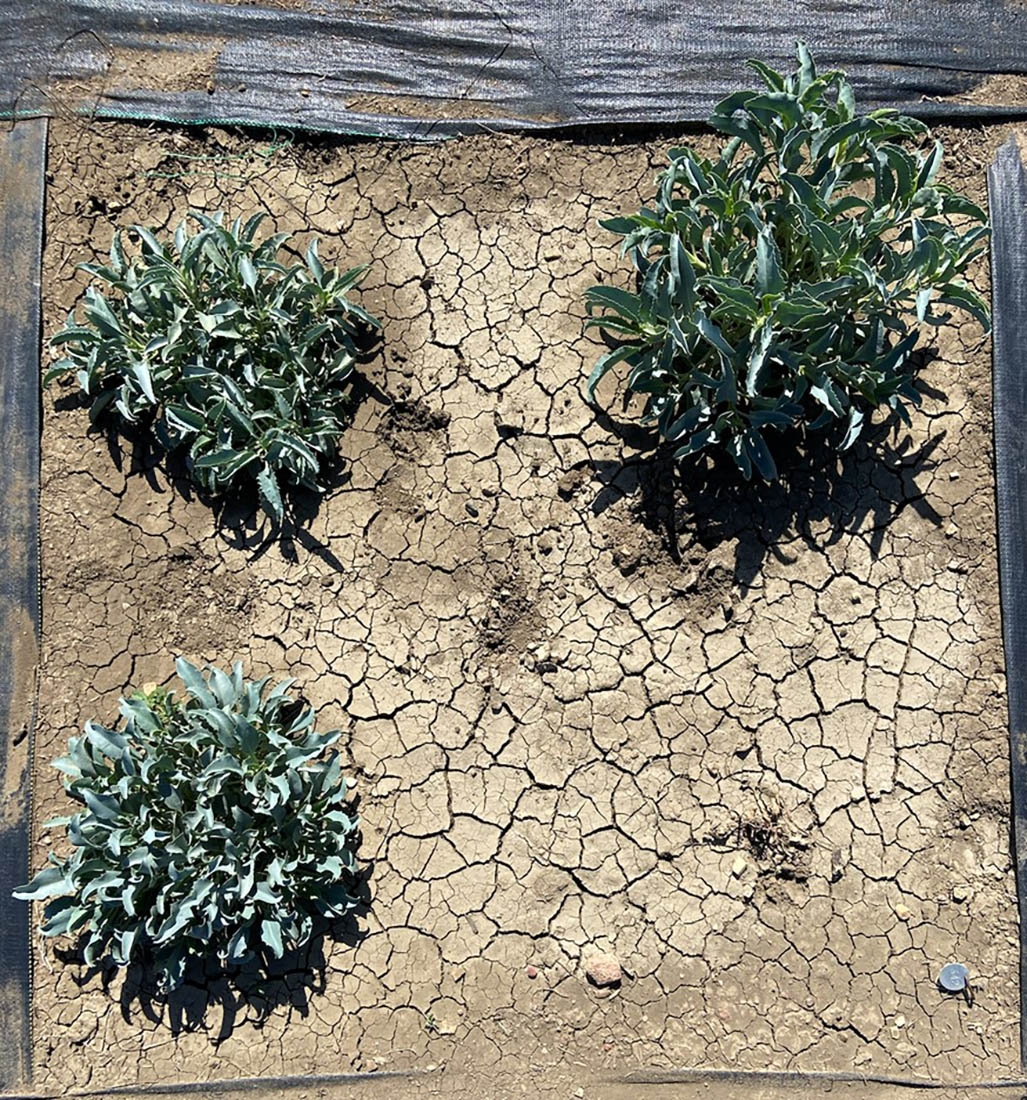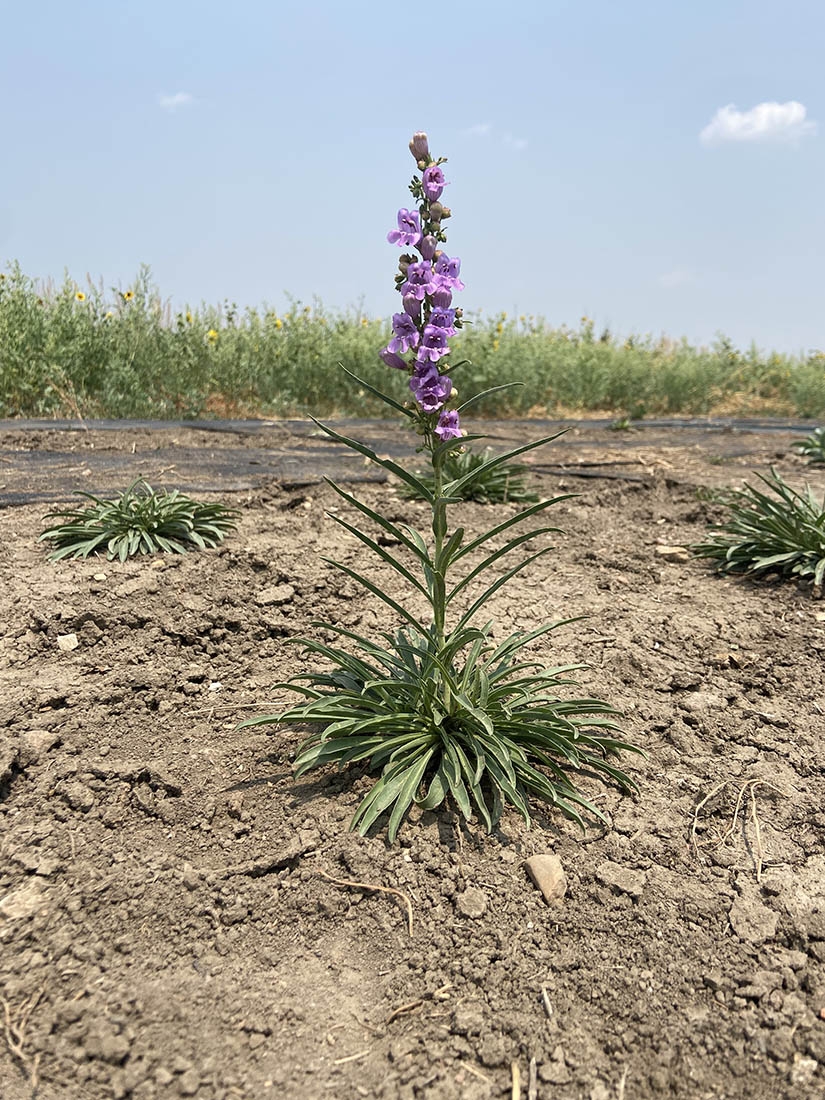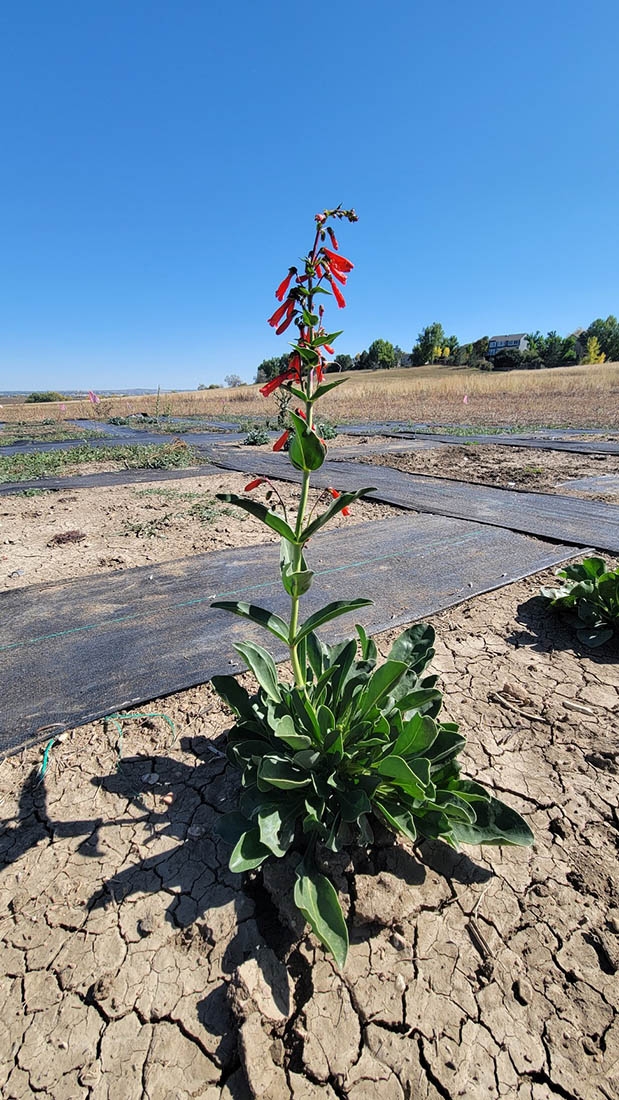Can Green Spaces Survive with Less Water?
Over the past two years, I have been doing research to better understand the relationship between water limitation and plant growth. Most recently, I have been analyzing data that I collected last summer from eight species of showy garden plants native to Colorado (predominantly Penstemons), grown under varying degrees of water stress. With help from seasonal employees, I measured survival, size and other drought-related traits during the 2024 growing season.
Because water is becoming an increasingly limited resource in Colorado and other semi-arid states, it is important to use water efficiently. Large amounts of water are used by municipalities, businesses and homeowners to maintain green spaces like gardens, backyards and parks. While these green spaces can be quite beneficial for improving the quality of life of residents – especially in urban areas – many are composed of turf grass (usually Kentucky bluegrass), due to its manicured appearance. Unfortunately, turf grass requires a lot of maintenance and irrigation, which is not in line with water efficiency goals.
With my master's thesis project, I sought to determine if some plants could still provide benefits to residents, but with a reduced water budget (including the often recommended 2 inches of irrigation per month), versus a 50% reduction (1 inch per month) and a 100% reduction (natural precipitation only). My question: Could we “get away with” watering plants less?
The answer: It depends! For example, survival depends on the species. Penstemon eatonii (firecracker penstemon) and Penstemon virgatus (upright blue penstemon) both had extremely high survival rates regardless of how much water they received. On the other hand, Penstemon palmeri (Palmer’s penstemon) had the most individuals survive when they were in the treatment that received 2 inches of irrigation per month but had lower survival rates when they received a reduced amount of irrigation.
Once I finish exploring and analyzing my data, the information may help horticulturists, landscape planners and residents make informed decisions about water-efficient plant species for green spaces. The information also provides foundational ecological data on drought tolerance in several of our native plant species.
This article was contributed by Brielle Cerep-Funke, graduate student.
Gallery




Add new comment